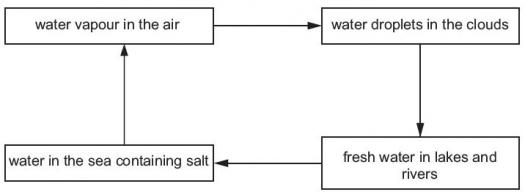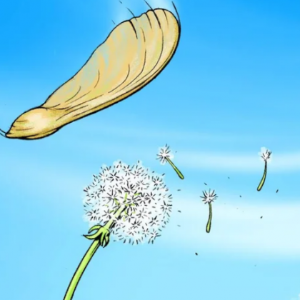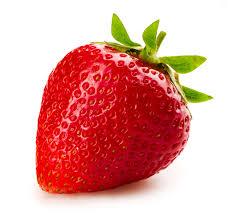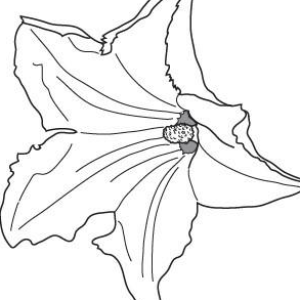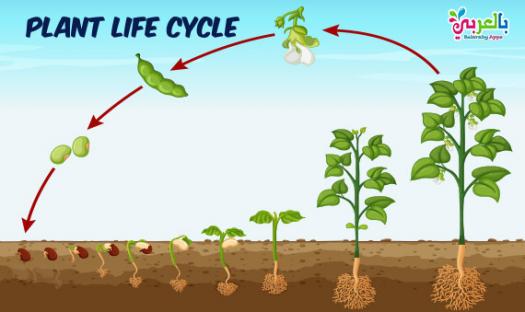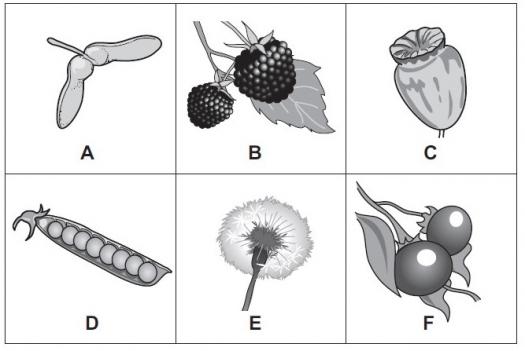Science Virtual Guide 4a First Session
(25).webp)
Explore key concepts in physical science with the 'Science virtual guide 4A first session'. This quiz covers changes in states of matter, including evaporation, freezing, and melting, enhancing understanding of everyday physical processes.
- 1.
The three states of matter are solid, liquid, and gas. What is the name of the process that occurs when a liquid turns into a gas?
- A.
Melting
- B.
Boiling
- C.
Evaporation
- D.
Condensation
Correct Answer
C. EvaporationExplanation
Evaporation is the process that occurs when a liquid turns into a gas. This happens when the molecules of a liquid gain enough energy to break the intermolecular forces holding them together and escape into the air as gas. Unlike boiling, which occurs at a specific temperature throughout the liquid, evaporation can happen at any temperature as long as the liquid has enough energy to overcome the intermolecular forces.Rate this question:
-
- 2.
What change of state occurs during freezing?
- A.
Liquid to Gas
- B.
Solid to Liquid
- C.
Liquid to Solid
- D.
Gas to Solid
Correct Answer
C. Liquid to SolidExplanation
During freezing, a change of state occurs where a liquid substance transforms into a solid state. This process involves the lowering of temperature, causing the particles in the liquid to slow down and come closer together, forming a rigid and organized structure. This transformation is commonly observed when water freezes and turns into ice.Rate this question:
-
- 3.
What change of state occurs during Melting?
- A.
Liquid to solid
- B.
Solid to Liquid
- C.
Liquid to Gas
- D.
Gas to Liquid
Correct Answer
B. Solid to LiquidExplanation
Melting is the process in which a solid substance changes into a liquid state. This occurs when heat is applied to the solid, causing the particles to gain enough energy to break their fixed positions and move more freely. As a result, the solid substance transforms into a liquid, maintaining its chemical composition but losing its rigid structure. Therefore, the correct answer is "Solid to Liquid."Rate this question:
-
- 4.
Gasoline can exist as a solid, liquid, or gas. What is the name of process A in the diagram?
- A.
Evaporation
- B.
Melting
- C.
Condensation
- D.
Freezing
Correct Answer
B. MeltingExplanation
The process A in the diagram is called melting. Melting is the process in which a solid substance changes into a liquid state when heat is applied. In this process, the solid particles gain enough energy to overcome their attractive forces and move freely, resulting in a change from a solid to a liquid state.Rate this question:
-
- 5.
Gasoline can exist as a solid, liquid, or gas. What is the name of process B in the diagram?
- A.
Evaporation
- B.
Melting
- C.
Condensation
- D.
Freezing
Correct Answer
A. EvaporationExplanation
Evaporation is the process in which a substance changes from a liquid to a gas at a temperature below its boiling point. In the given question, it is stated that gasoline can exist as a solid, liquid, or gas, indicating that it can undergo phase changes. Since the question asks for the name of process B in the diagram, and evaporation is the process of a liquid turning into a gas, it can be concluded that process B is evaporation.Rate this question:
-
- 6.
Gasoline can exist as a solid, liquid, or gas. What is the name of process C in the diagram?
- A.
Evaporation
- B.
Melting
- C.
Condensation
- D.
Freezing
Correct Answer
D. FreezingExplanation
Freezing is the process in which a substance changes from a liquid to a solid state, typically due to a decrease in temperature. In the context of gasoline, freezing refers to the transition of gasoline from a liquid state to a solid state.Rate this question:
-
- 7.
Gasoline can exist as a solid, liquid, or gas. What is the name of process D in the diagram?
- A.
Evaporation
- B.
Melting
- C.
Condensation
- D.
Freezing
Correct Answer
C. CondensationExplanation
Condensation is the process by which a substance changes from a gas to a liquid state. In the given question, gasoline is mentioned as being able to exist in solid, liquid, or gas form. Since condensation specifically refers to the change from gas to liquid, it is the appropriate term to describe process D in the diagram.Rate this question:
-
- 8.
The flow chart shows part of the water cycle. What is the name of process A?
- A.
Evaporation
- B.
Condensation
- C.
Melting
- D.
Freezing
- E.
Option 5
Correct Answer
A. EvaporationExplanation
Process A in the flow chart is evaporation. Evaporation is the process by which water changes from a liquid to a gas or vapor, usually due to heat. In the water cycle, evaporation occurs when water on the Earth's surface, such as in oceans, lakes, and rivers, is heated by the sun and turns into water vapor, rising into the atmosphere. This process is essential for the water cycle as it helps to transfer water from the Earth's surface back into the atmosphere.Rate this question:
-
- 9.
The flow chart shows part of the water cycle. What is the name of process B?
- A.
Evaporation
- B.
Condensation
- C.
Melting
- D.
Freezing
Correct Answer
B. CondensationExplanation
Process B is condensation. Condensation is the process in which water vapor, a gaseous state of water, cools and changes into liquid water droplets. This occurs when the air temperature decreases to the point where it cannot hold all of the moisture it contains, leading to the formation of tiny water droplets on surfaces or in the air.Rate this question:
-
- 10.
Sometimes it is so cold that the water in a lake becomes ice.
- A.
Evaporation
- B.
Freezing
- C.
Melting
- D.
Condensation
Correct Answer
B. FreezingExplanation
When the temperature drops significantly, water molecules lose energy and slow down. At a certain point, the molecules move so slowly that they start to form a rigid structure, known as ice. This process is called freezing. In the given scenario, the cold temperature causes the water in the lake to freeze and transform into ice.Rate this question:
-
- 11.
The flow chart shows the movement of water through the environment. Name the process that changes water in the sea into water vapour.
- A.
Condensation
- B.
Evaporation
- C.
Precipitation
- D.
Collection
Correct Answer
B. EvaporationExplanation
Evaporation is the process that changes water in the sea into water vapor. During evaporation, water molecules gain enough energy to break free from the liquid surface and become a gas. This process occurs when the sun's heat causes the water to heat up and turn into vapor, which then rises into the atmosphere. Evaporation is an important part of the water cycle, as it helps to transfer water from the Earth's surface back into the atmosphere, where it can later form clouds and eventually return to the Earth as precipitation.Rate this question:
-
- 12.
The flow chart shows the movement of water through the environment. Name the process that changes water vapor into water droplets.
- A.
Condensation
- B.
Evaporation
- C.
Precipitation
- D.
Collection
Correct Answer
A. CondensationExplanation
Condensation is the process in which water vapor, a gaseous state of water, cools and changes into liquid water droplets. This occurs when the air temperature decreases to the point where it cannot hold all of the moisture it contains, leading to the formation of tiny water droplets on surfaces or in the air.Rate this question:
-
- 13.
Condensation is the opposite of evaporation?
- A.
True
- B.
False
Correct Answer
A. TrueExplanation
Condensation is indeed the opposite of evaporation. Evaporation is the process by which a liquid turns into a gas, while condensation is the process by which a gas turns into a liquid. During evaporation, heat energy is absorbed, causing the liquid particles to gain enough energy to escape into the gas phase. On the other hand, during condensation, heat energy is released, causing the gas particles to lose energy and come together to form a liquid. Therefore, condensation and evaporation are opposite processes that occur when there is a change in the state of matter from gas to liquid or vice versa.Rate this question:
-
- 14.
Condensation happens when a liquid turns into a gas
- A.
True
- B.
False
Correct Answer
B. FalseExplanation
The explanation for the given correct answer is that condensation actually occurs when a gas turns into a liquid. This process happens when the temperature of the gas decreases, causing the gas molecules to slow down and come closer together, forming a liquid.Rate this question:
-
- 15.
Flowering plants have a life cycle. Choose the correct stage of the picture.
- A.
Fertilization
- B.
Germination
- C.
Pollination
- D.
Seed dispersal
- E.
Seed production
Correct Answer
D. Seed dispersalExplanation
The correct stage of the picture is seed dispersal. This is the stage in the life cycle of flowering plants where mature seeds are released from the parent plant and are dispersed to new locations. This dispersal helps in the colonization of new areas and prevents competition between parent and offspring plants.Rate this question:
-
- 16.
Flowering plants have a life cycle. Choose the correct stage of the picture.
- A.
Fertilization
- B.
Germination
- C.
Pollination
- D.
Seed dispersal
- E.
Seed production
Correct Answer
C. PollinationExplanation
The correct stage of the picture is pollination. Pollination is the process by which pollen is transferred from the male part of a flower to the female part, leading to fertilization and the production of seeds. This stage is crucial for plant reproduction as it allows for the transfer of genetic material between plants, ensuring genetic diversity and the continuation of the species.Rate this question:
-
- 17.
Here is a picture of a strawberry. Choose the correct method that animals use to disperse the seeds of a strawberry
- A.
Animal by fur
- B.
By the wind
- C.
By the water
- D.
Animal by defecation
Correct Answer
D. Animal by defecationExplanation
Animals disperse strawberry seeds by defecating them. When animals consume strawberries, the seeds pass through their digestive system and are excreted in their feces. This process allows the seeds to be transported to new locations away from the parent plant, increasing the chances of successful germination and growth.Rate this question:
-
- 18.
Zucchini plants have male flowers and female flowers. Male flowers only contain male parts. Here is a male flower. What parts are in the male flower?
- A.
Anther and ovary
- B.
Anther and filament
- C.
Ovary and filament
- D.
Stigma and ovule
Correct Answer
B. Anther and filamentExplanation
In a male flower, the anther and filament are present. The anther is responsible for producing pollen, which contains the male reproductive cells. The filament is the stalk-like structure that supports the anther. The other options mentioned in the answer choices, such as ovary, stigma, and ovule, are parts of the female flower and are not present in a male flower.Rate this question:
-
- 19.
Part of the male flower fertilizes the female flower. Complete the sentence. The ovum of the female flower is fertilised by the ________________
- A.
Bee
- B.
Pollen
- C.
Stigma
- D.
Style
Correct Answer
B. PollenExplanation
Pollen is the correct answer because it is the part of the male flower that fertilizes the female flower. Pollen contains the male reproductive cells, which are transferred from the male flower to the female flower, allowing fertilization to occur.Rate this question:
-
- 20.
Choose the correct order of the Life cycle of a plant
- A.
Germination- seed dispersal - pollination - fertilisation - seed production
- B.
Germination- pollination - fertilisation - seed production - seed dispersal
- C.
Germination - pollination - seed production - seed dispersal - fertilisation
- D.
Fertilisation - germination- pollination - seed production - seed dispersal
- E.
Option 5
Correct Answer
B. Germination- pollination - fertilisation - seed production - seed dispersalExplanation
The correct order of the life cycle of a plant is germination, pollination, fertilization, seed production, and seed dispersal. Germination is the process in which a seed begins to grow into a new plant. Pollination is the transfer of pollen from the male reproductive organ to the female reproductive organ of a plant. Fertilization occurs when the sperm from the pollen fertilizes the egg in the ovary, leading to the formation of a seed. Seed production involves the development and maturation of the seed. Seed dispersal is the method by which seeds are spread away from the parent plant to ensure the survival and growth of new plants.Rate this question:
-
- 21.
Look at the diagram showing a plant growing. What happens to the roots when the plant grows?
- A.
They absorb more sunlight
- B.
They are longer and deeper (into soil)
- C.
They just grows
- D.
They support the leaves
Correct Answer
B. They are longer and deeper (into soil)Explanation
As a plant grows, its roots also grow longer and deeper into the soil. This allows the plant to anchor itself more firmly and access more nutrients and water from the soil. The longer and deeper roots also help the plant withstand wind and other environmental stresses. Additionally, the increased surface area of the roots allows for more absorption of water and minerals, which are essential for the plant's growth and survival.Rate this question:
-
- 22.
Look at the diagram showing a plant growing. What two things happen to the leaves when the plant grows?
- A.
They get the nutrients
- B.
They become green
- C.
They are larger and bigger
- D.
The leaves grow and die
Correct Answer
C. They are larger and biggerExplanation
As a plant grows, one of the things that happen to its leaves is that they become larger and bigger. This is because as the plant grows, it needs more surface area to carry out photosynthesis and absorb sunlight. The increase in size allows the leaves to capture more light energy and produce more food for the plant.Rate this question:
-
- 23.
There are many different types of seed. Two of these seeds are dispersed by the wind. Which two seeds are dispersed by the wind?
- A.
A and C
- B.
A and E
- C.
C and D
- D.
D and F
Correct Answer
B. A and EExplanation
The correct answer is A and E because seeds that are dispersed by the wind typically have adaptations that allow them to be easily carried by air currents. Seed A and seed E are most likely to have these adaptations.Rate this question:
-
- 24.
There are many different types of seed. One of these seeds are dispersed by the explosion Which one of the seeds are dispersed by the explosion?
- A.
A
- B.
B
- C.
C
- D.
D
- E.
E
- F.
F
Correct Answer
D. DExplanation
Seed D is dispersed by explosion.Rate this question:
-
Quiz Review Timeline +
Our quizzes are rigorously reviewed, monitored and continuously updated by our expert board to maintain accuracy, relevance, and timeliness.
-
Current Version
-
Feb 19, 2024Quiz Edited by
ProProfs Editorial Team -
Oct 20, 2020Quiz Created by
Catherine Halcomb
- Aeronautics Quizzes
- Aerospace Quizzes
- Agricultural Science Quizzes
- Astrology Quizzes
- Astronomy Quizzes
- Atom Quizzes
- Biochemistry Quizzes
- Biology Quizzes
- Biomechanics Quizzes
- Biostatistics Quizzes
- Biotechnology Quizzes
- Botany Quizzes
- Branches Of Science Quizzes
- Chemistry Quizzes
- Cytology Quizzes
- Easy Science Quizzes
- Ecology Quizzes
- Electrical Quizzes
- Embryology Quizzes
- Endocrinology Quizzes
- Engineering Quizzes
- Environmental Science Quizzes
- Epidemiology Quizzes
- Experiment Quizzes
- Forestry Quizzes
- Fossil Quizzes
- Gas Quizzes
- General Science Quizzes
- Genetics Quizzes
- Histology Quizzes
- Human Biology Quizzes
- Integrated Science Quizzes
- Invention Quizzes
- Library Science Quizzes
- Lighting Quizzes
- Liquid Quizzes
- Marine Biology Quizzes
- Microbiology Quizzes
- Molecular Biology Quizzes
- Nature Quizzes
- Neuroscience Quizzes
- Nuclear Science Quizzes
- Oceanography Quizzes
- Physics Quizzes
- Psychology Quizzes
- Science And Technology Quizzes
- Science Glossary Quizzes
- Science Knowledge Quizzes
- Science Practice Quizzes
- Scientific Method Quizzes
- Scientific Notation Quizzes
- Soil Science Quizzes
- Solar System Quizzes
- Solid Quizzes
- Toxicology Quizzes
- Zoology Quizzes
 Back to top
Back to top





